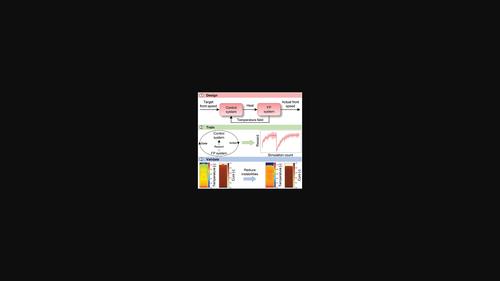当前位置:
X-MOL 学术
›
Adv. Theory Simul.
›
论文详情
Our official English website, www.x-mol.net, welcomes your
feedback! (Note: you will need to create a separate account there.)
Closed-Loop Control of Front Speed During Frontal Polymerization of Dicyclopentadiene—A Numerical Study
Advanced Theory and Simulations ( IF 2.9 ) Pub Date : 2023-05-10 , DOI: 10.1002/adts.202300015 Grayson Schaer 1 , Timothy Bretl 1, 2
Advanced Theory and Simulations ( IF 2.9 ) Pub Date : 2023-05-10 , DOI: 10.1002/adts.202300015 Grayson Schaer 1 , Timothy Bretl 1, 2
Affiliation

|
The application of closed-loop control to enforce a target front speed during frontal polymerization (FP) of dicyclopentadiene under various initial and boundary conditions is demonstrated. Uncontrolled propagation of FP reactions can result in frontal quenching due to heat loss, unstable front propagation, material overheating, spontaneous pattern formation, and heterogenous cured material properties. These disadvantageous properties of FP limit its use to cases with highly controlled initial and boundary conditions. It is shown with results in simulation that these problems can be mitigated in three ways through the application of closed-loop control. First, it is shown that a target front speed can be enforced by locally controlling the temperature field during FP via an external heat source. Second, it is shown that this method prevents unstable front propagation and quenching despite adverse initial and boundary conditions. Third, it is shown that this method minimizes cure time and energy consumption compared to bulk heating.
中文翻译:

双环戊二烯前端聚合过程中前端速度的闭环控制——数值研究
演示了在各种初始和边界条件下,在双环戊二烯正面聚合 (FP) 过程中应用闭环控制来强制实现目标正面速度。FP 反应不受控制的传播可能会因热损失、不稳定的前沿传播、材料过热、自发图案形成和异质固化材料特性而导致前沿猝灭。FP 的这些不利特性限制了其在初始条件和边界条件高度受控的情况下的使用。仿真结果表明,通过应用闭环控制,可以通过三种方式缓解这些问题。首先,结果表明,可以通过外部热源局部控制 FP 期间的温度场来强制实现目标前沿速度。第二,结果表明,尽管初始条件和边界条件不利,该方法仍可防止不稳定的前沿传播和淬火。第三,与整体加热相比,该方法最大限度地减少了固化时间和能耗。
更新日期:2023-05-10
中文翻译:

双环戊二烯前端聚合过程中前端速度的闭环控制——数值研究
演示了在各种初始和边界条件下,在双环戊二烯正面聚合 (FP) 过程中应用闭环控制来强制实现目标正面速度。FP 反应不受控制的传播可能会因热损失、不稳定的前沿传播、材料过热、自发图案形成和异质固化材料特性而导致前沿猝灭。FP 的这些不利特性限制了其在初始条件和边界条件高度受控的情况下的使用。仿真结果表明,通过应用闭环控制,可以通过三种方式缓解这些问题。首先,结果表明,可以通过外部热源局部控制 FP 期间的温度场来强制实现目标前沿速度。第二,结果表明,尽管初始条件和边界条件不利,该方法仍可防止不稳定的前沿传播和淬火。第三,与整体加热相比,该方法最大限度地减少了固化时间和能耗。











































 京公网安备 11010802027423号
京公网安备 11010802027423号